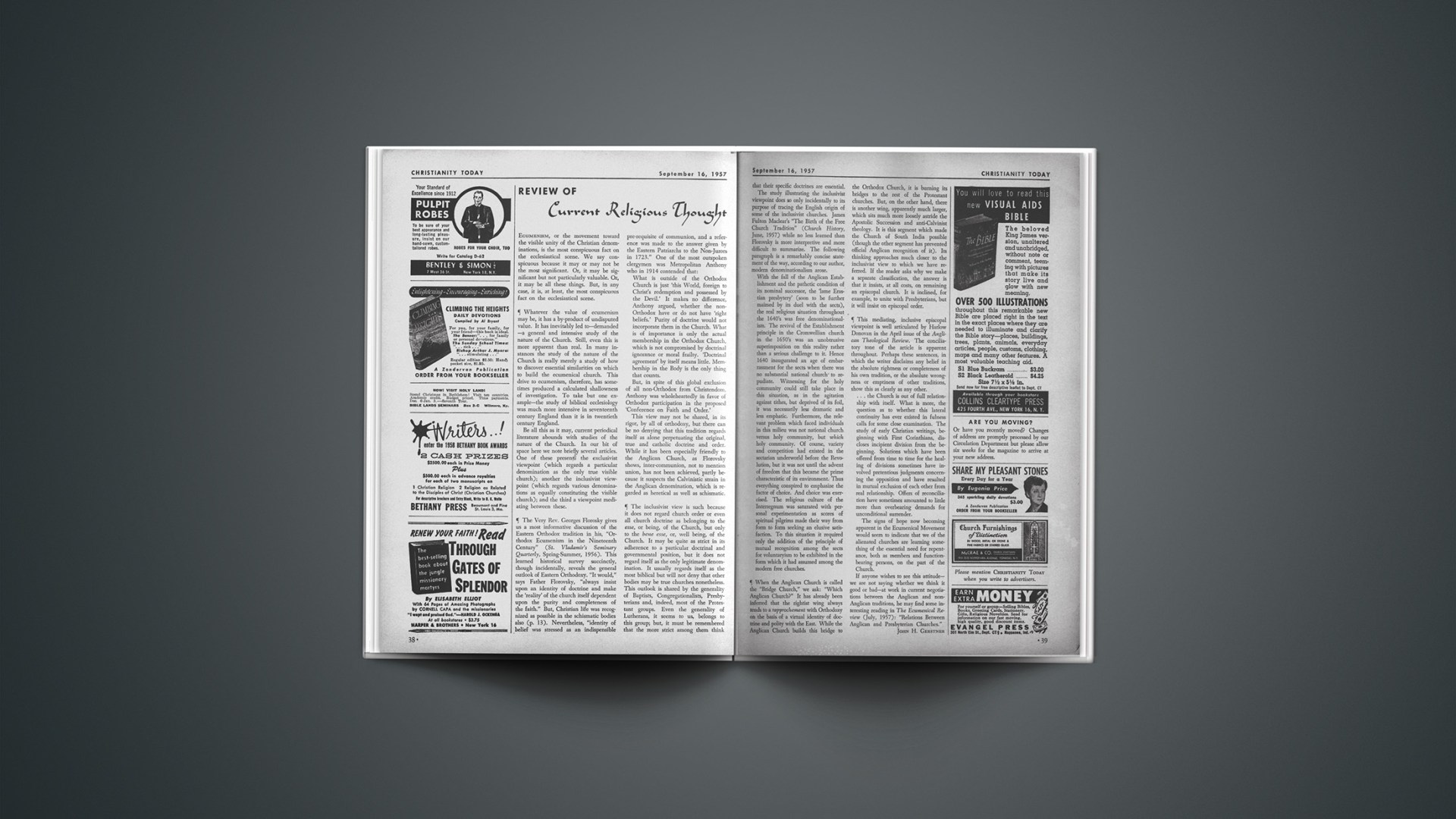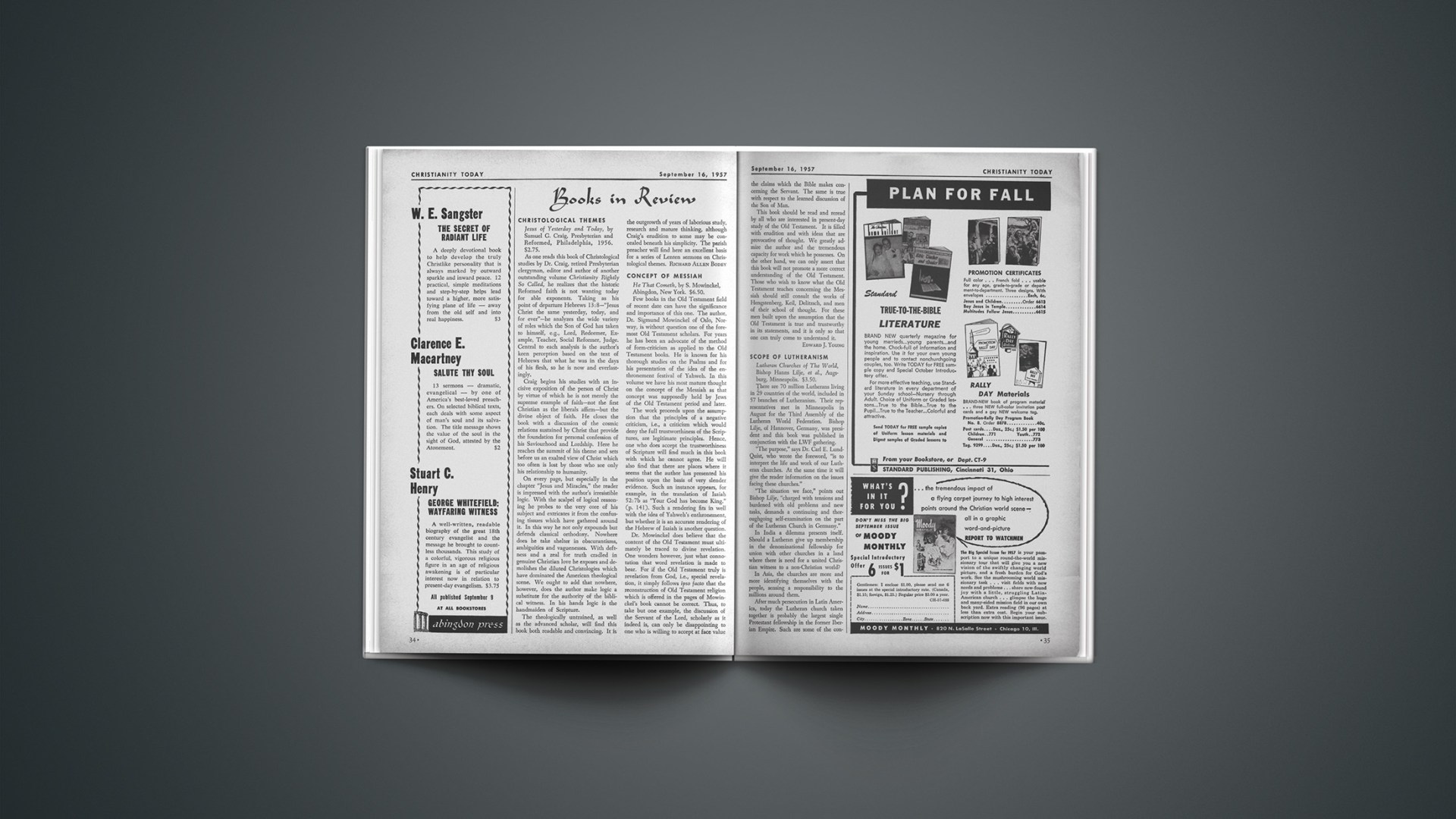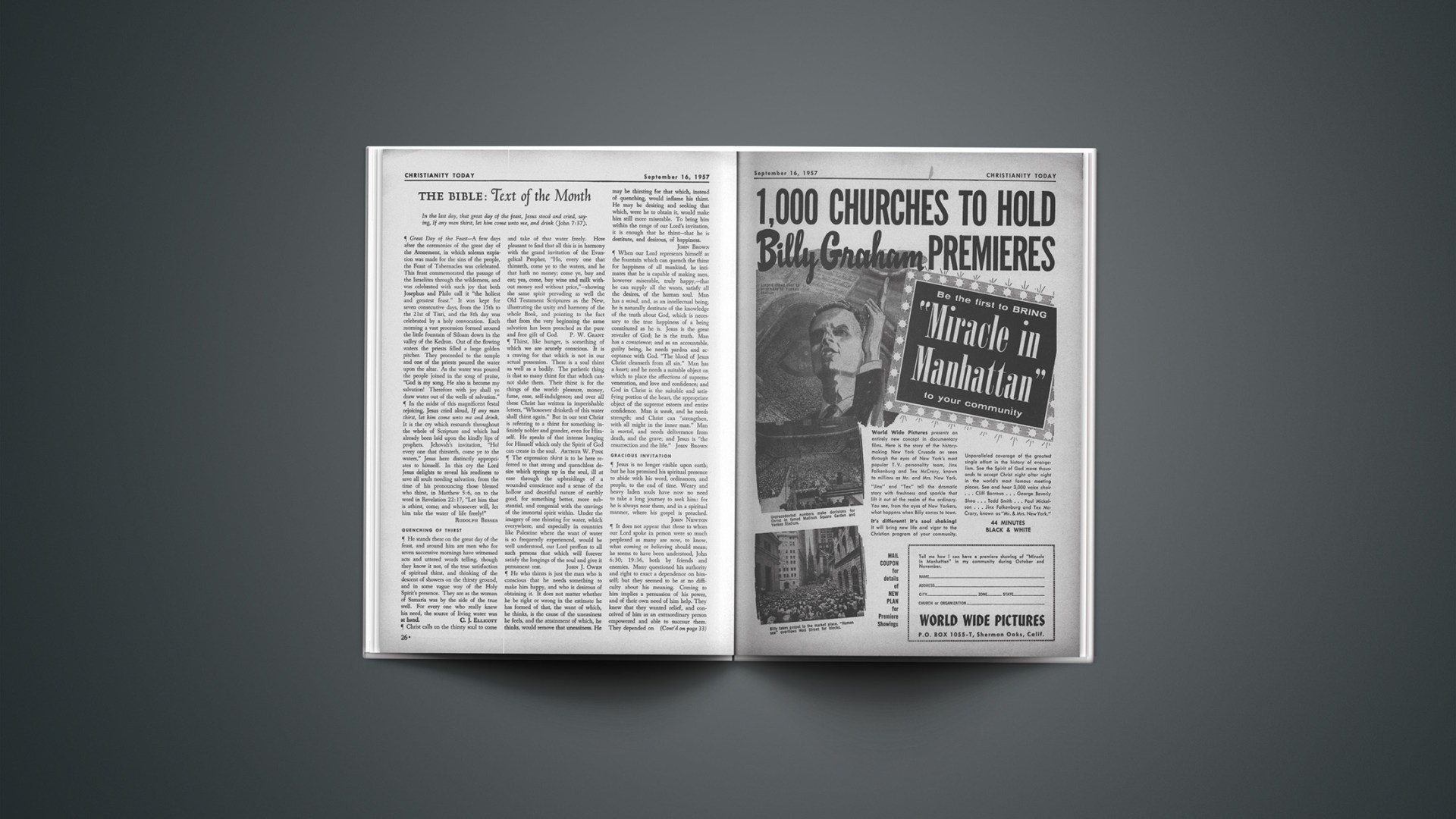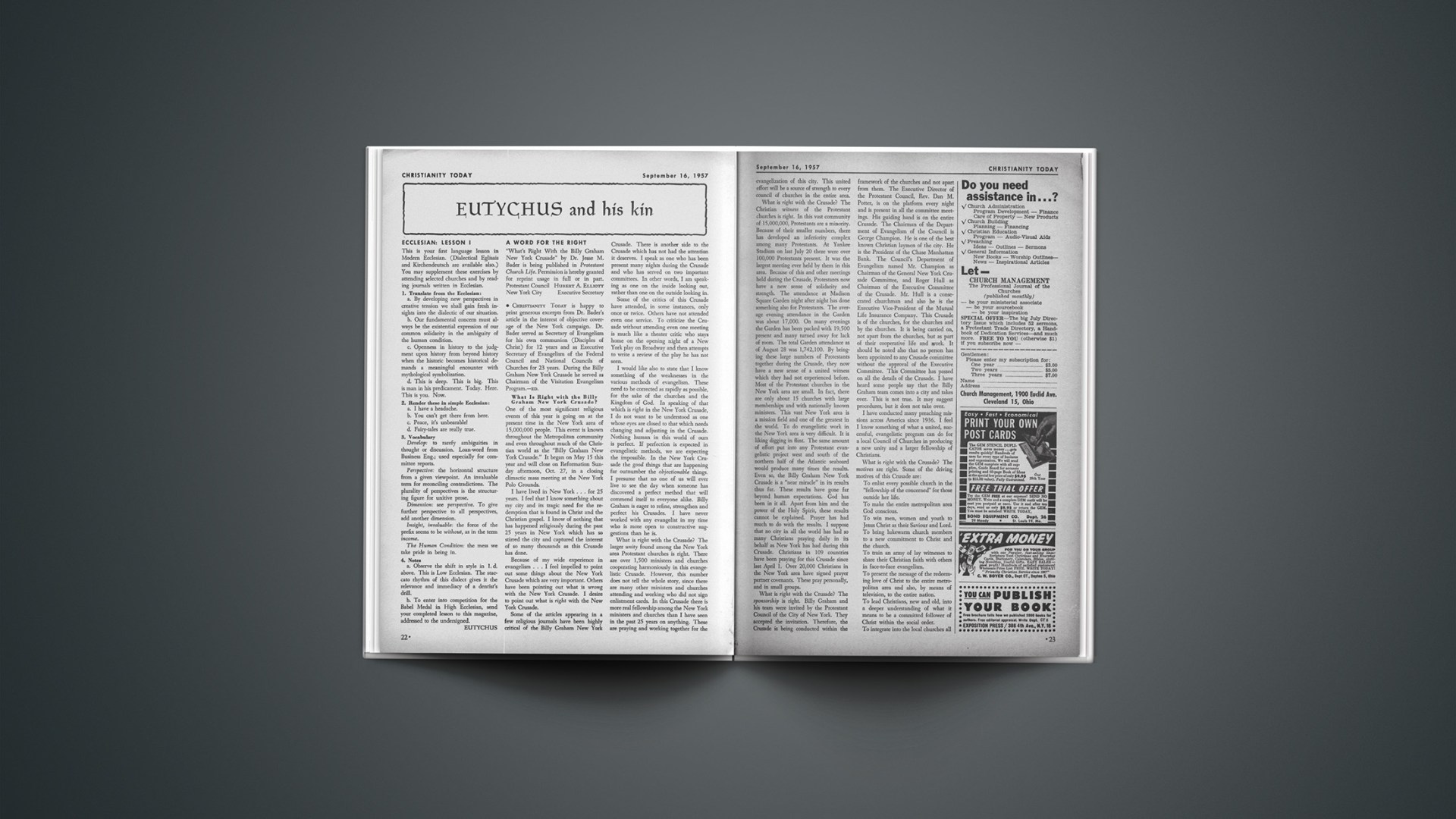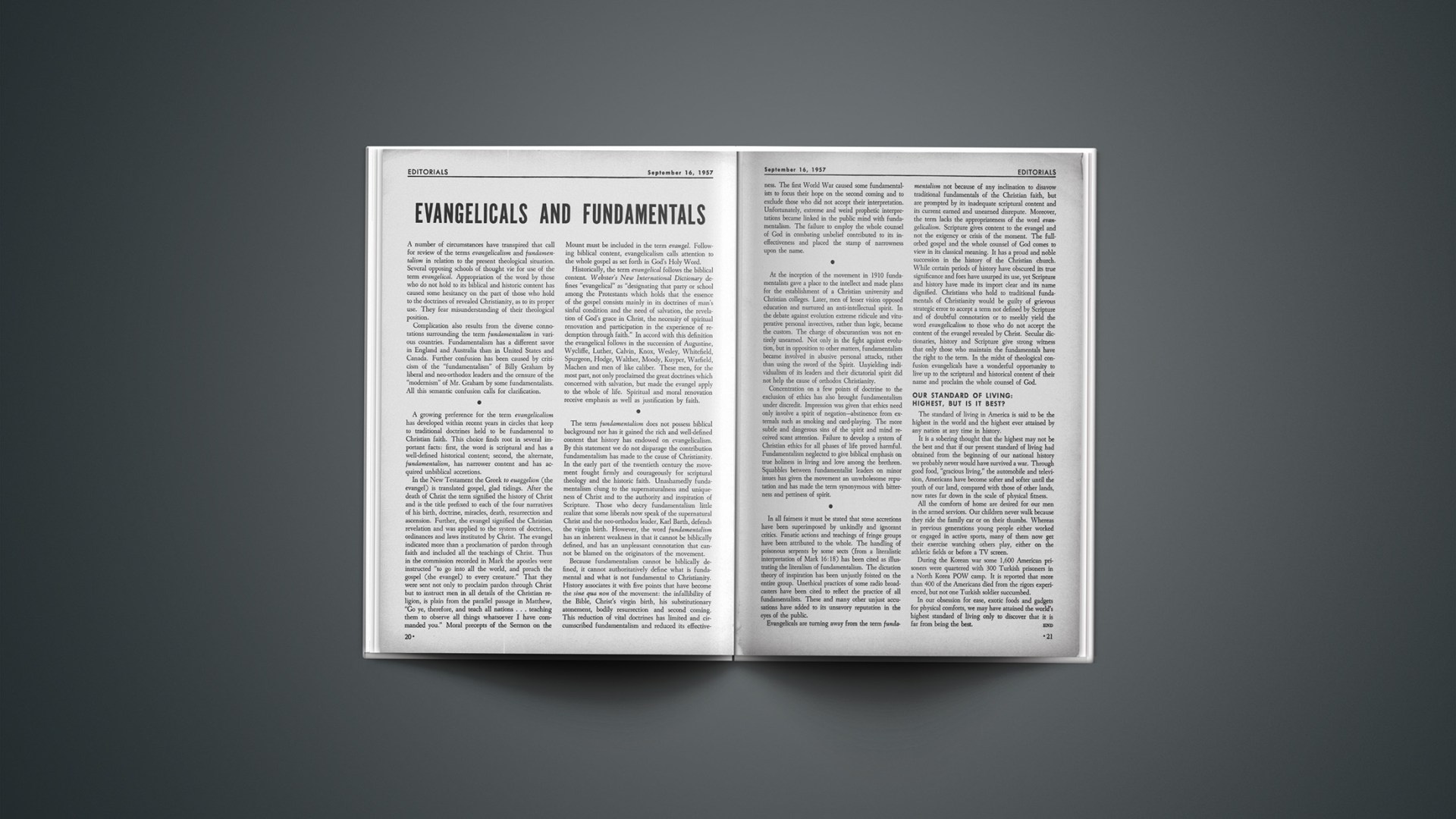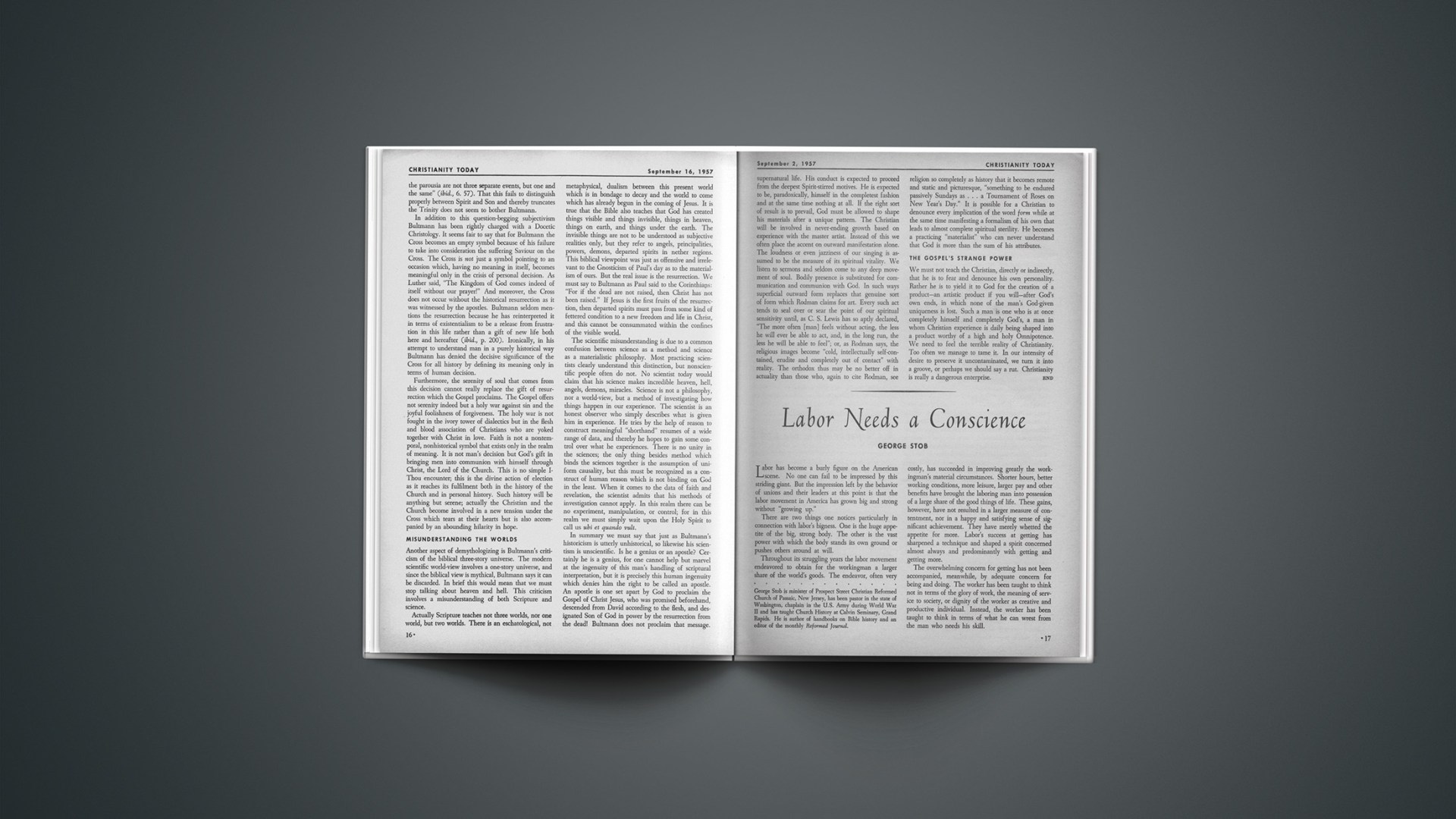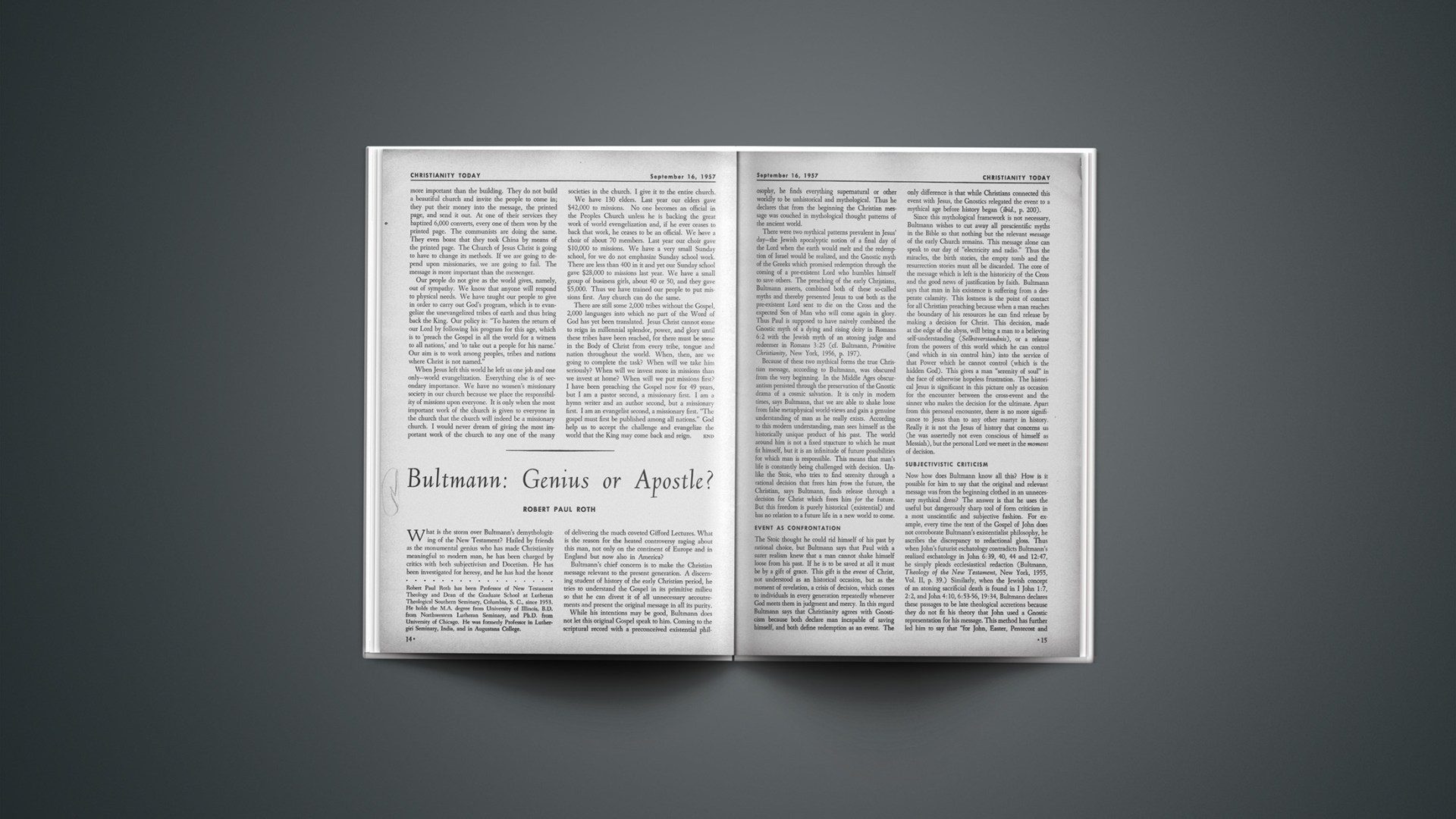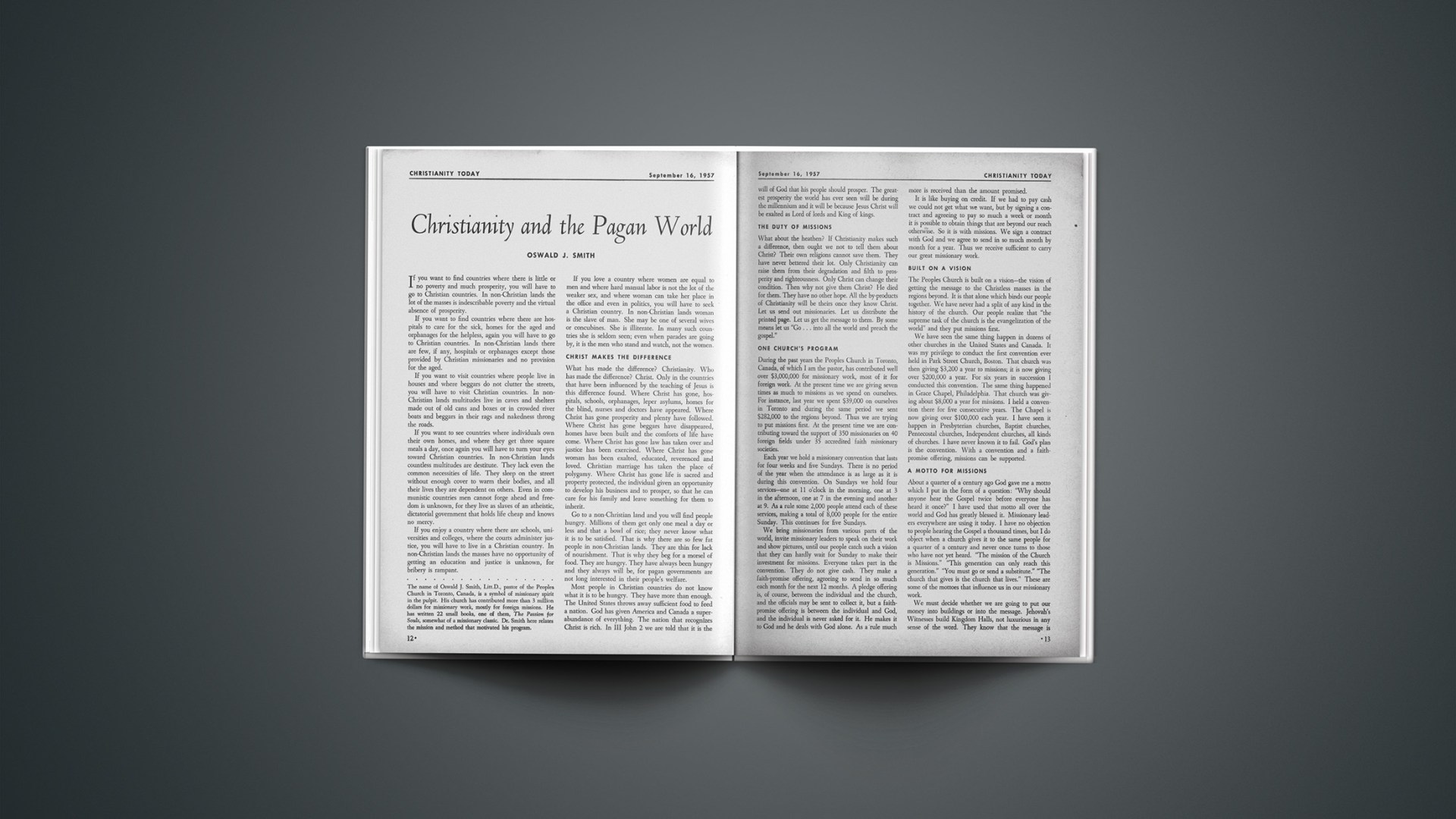Ecumenism, or the movement toward the visible unity of the Christian denominations, is the most conspicuous fact on the ecclesiastical scene. We say conspicuous because it may or may not be the most significant. Or, it may be significant but not particularly valuable. Or, it may be all these things. But, in any case, it is, at least, the most conspicuous fact on the ecclesiastical scene.
Whatever the value of ecumenism may be, it has a by-product of undisputed value. It has inevitably led to—demanded—a general and intensive study of the nature of the Church. Still, even this is more apparent than real. In many instances the study of the nature of the Church is really merely a study of how to discover essential similarities on which to build the ecumenical church. This drive to ecumenism, therefore, has sometimes produced a calculated shallowness of investigation. To take but one example—the study of biblical ecclesiology was much more intensive in seventeenth century England than it is in twentieth century England.
Be all this as it may, current periodical literature abounds with studies of the nature of the Church. In our bit of space here we note briefly several articles. One of these presents the exclusivist viewpoint (which regards a particular denomination as the only true visible church); another the inclusivist viewpoint (which regards various denominations as equally constituting the visible church); and the third a viewpoint mediating between these.
The Very Rev. Georges Florosky gives us a most informative discussion of the Eastern Orthodox tradition in his, “Orthodox Ecumenism in the Nineteenth Century” (St. Vladamir’s Seminary Quarterly, Spring-Summer, 1956). This learned historical survey succinctly, though incidentally, reveals the general outlook of Eastern Orthodoxy. “It would,” says Father Florovsky, “always insist upon an identity of doctrine and make the ‘reality’ of the church itself dependent upon the purity and completeness of the faith.” But, Christian life was recognized as possible in the schismatic bodies also (p. 13). Nevertheless, “identity of belief was stressed as an indispensible pre-requisite of communion, and a reference was made to the answer given by the Eastern Patriarchs to the Non-Jurors in 1723.” One of the most outspoken clergymen was Metropolitan Anthony who in 1914 contended that:
What is outside of the Orthodox Church is just ‘this World, foreign to Christ’s redemption and possessed by the Devil.’ It makes no difference, Anthony argued, whether the non-Orthodox have or do not have ‘right beliefs.’ Purity of doctrine would not incorporate them in the Church. What is of importance is only the actual membership in the Orthodox Church, which is not compromised by doctrinal ignorance or moral frailty. ‘Doctrinal agreement’ by itself means little. Membership in the Body is the only thing that counts.
But, in spite of this global exclusion of all non-Orthodox from Christendom, Anthony was wholeheartedly in favor of Orthodox participation in the proposed ‘Conference on Faith and Order.’
This view may not be shared, in its rigor, by all of orthodoxy, but there can be no denying that this tradition regards itself as alone perpetuating the original, true and catholic doctrine and order. While it has been especially friendly to the Anglican Church, as Florovsky shows, inter-communion, not to mention union, has not been achieved, partly because it suspects the Calvinistic strain in the Anglican denomination, which is regarded as heretical as well as schismatic.
The inclusivist view is such because it does not regard church order or even all church doctrine as belonging to the esse, or being, of the Church, but only to the bene esse, or, well being, of the Church. It may be quite as strict in its adherence to a particular doctrinal and governmental position, but it does not regard itself as the only legitimate denomination. It usually regards itself as the most biblical but will not deny that other bodies may be true churches nonetheless. This outlook is shared by the generality of Baptists, Congregationalists, Presbyterians and, indeed, most of the Protestant groups. Even the generality of Lutherans, it seems to us, belongs to this group; but, it must be remembered that the more strict among them think that their specific doctrines are essential.
The study illustrating the inclusivist viewpoint does so only incidentally to its purpose of tracing the English origin of some of the inclusivist churches. James Fulton Maclear’s “The Birth of the Free Church Tradition” (Church History, June, 1957) while no less learned than Florovsky is more interpretive and more difficult to summarize. The following paragraph is a remarkably concise statement of the way, according to our author, modern denominationalism arose.
With the fall of the Anglican Establishment and the pathetic condition of its nominal successor, the ‘lame Erastian presbytery’ (soon to be further maimed by its duel with the sects), the real religious situation throughout the 1640’s was free denominationalism. The revival of the Establishment principle in the Cromwellian church in the 1650’s was an unobtrusive superimposition on this reality rather than a serious challenge to it. Hence 1640 inaugurated an age of embarrassment for the sects when there was no substantial national church to repudiate. Witnessing for the holy community could still take place in this situation, as in the agitation against tithes, but deprived of its foil, it was necessarily less dramatic and less emphatic. Furthermore, the relevant problem which faced individuals in this milieu was not national church versus holy community, but which holy community. Of course, variety and competition had existed in the sectarian underworld before the Revolution, but it was not until the advent of freedom that this became the prime characteristic of its environment. Thus everything conspired to emphasize the factor of choice. And choice was exercised. The religious culture of the Interregnum was saturated with personal experimentation as scores of spiritual pilgrims made their way from form to form seeking an elusive satisfaction. To this situation it required only the addition of the principle of mutual recognition among the sects for voluntaryism to be exhibited in the form which it had assumed among the modern free churches.
When the Anglican Church is called the “Bridge Church,” we ask: “Which Anglican Church?” It has already been inferred that the rightist wing always tends to a rapprochement with Orthodoxy on the basis of a virtual identity of doctrine and polity with the East. While the Anglican Church builds this bridge to the Orthodox Church, it is burning its bridges to the rest of the Protestant churches. But, on the other hand, there is another wing, apparently much larger, which sits much more loosely astride the Apostolic Succession and anti-Calvinist theology. It is this segment which made the Church of South India possible (though the other segment has prevented official Anglican recognition of it). Its thinking approaches much closer to the inclusivist view to which we have referred. If the reader asks why we make a separate classification, the answer is that it insists, at all costs, on remaining an episcopal church. It is inclined, for example, to unite with Presbyterians, but it will insist on episcopal order.
This mediating, inclusive episcopal viewpoint is well articulated by Harlow Donovan in the April issue of the Anglican Theological Review. The conciliatory tone of the article is apparent throughout. Perhaps these sentences, in which the writer disclaims any belief in the absolute rightness or completeness of his own tradition, or the absolute wrongness or emptiness of other traditions, show this as clearly as any other.
… the Church is out of full relationship with itself. What is more, the question as to whether this lateral continuity has ever existed in fulness calls for some close examination. The study of early Christian writings, beginning with First Corinthians, discloses incipient division from the beginning. Solutions which have been offered from time to time for the healing of divisions sometimes have involved pretentious judgments concerning the opposition and have resulted in mutual exclusion of each other from real relationship. Offers of reconciliation have sometimes amounted to little more than overbearing demands for unconditional surrender.
The signs of hope now becoming apparent in the Ecumenical Movement would seem to indicate that we of the alienated churches are learning something of the essential need for repentance, both as members and function-bearing persons, on the part of the Church.
If anyone wishes to see this attitude—we are not saying whether we think it good or bad—at work in current negotiations between the Anglican and non-Anglican traditions, he may find some interesting reading in The Ecumenical Review (July, 1957): “Relations Between Anglican and Presbyterian Churches”

